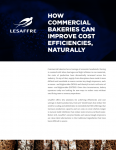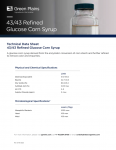Nestlé scientists apply modern physics to new food designs
construct the rational design of complex food materials for new
food products, say Nestle scientists.
Foods make up some of the most complex examples of soft condensed matter (SCM) with which we interact daily.
Their complexity arises from several factors: the intricacy of components, the different aggregation states in which foods are encountered, and the multitude of relevant characteristic time and length scales.
For this latest fundamental research, scientists at the world's number one food group studied new theoretical physical approaches that could be filtered down into food formulations only dreamt of before.
The authors of the paper, published recently in Nature Materials, explain that molecules, macromolecules and colloids have always self-assembled, aggregated and blended in nature, long before man started to understand the underlying principles.
"Soft Condensed Matter Physics will contribute to the understanding of physical properties of natural proteins, lipids, polysaccharides and colloids, such as casein micelles in milk," say Professors Raffaele Mezzenga and Peter Schurtenberger from Fribourg's University, and Drs Adam Burbidge and Martin Michel from Nestlé Research Center.
They claim the application of modern physics on new food designs will allow Nestlé food scientists to create, and faciliate, new food structures and processes.
In addition, the researchers suggest knowledge gained from modern physics could "improve quality and health related food attributes, such as texture, flavour profiles, and the targeted delivery of functional molecules," beneficial to health.
Identifying the most suitable techniques available today [about 10 different techniques] will help to make foods more efficient in terms of structure and functionality, Professor Mezzenga tells FoodNavigator.com.
For example, the quality of a yoghurt can be increased if one better understands how casein micelles behave in dense systems.
And the foam of a cappuccino can last longer, and be lighter, if you know how to stabilise it better, he adds.
A key focus area for the scientists are functional foods, and how new food products with a health kick can be designed without sacrificing the structure.
In addition, how foods currently available in the firm's massive portfolio can be given a 'healthy facelift' without jeopardising their established structure and organoleptic properties.
Complex foods, which not only have to please your taste, but also accomplish a specific "healthy" function, are normally made up of a large number of components, such as protein, vitamins, and carbohydrates which make challenging their structural optimisation, explains Professor Mezzenga.
By having a physically inspired approach, such as that described in the paper, one can assemble these components into nicely structured and stable foods, he adds.
The need of functional foods comes from nutritional aspects that are not directly related to the structure of the food. However, in order to release these functionalities in the body in a suitable way, the structure of the food becomes a key parameter.
"The approach described should assist food scientists to design foods with any required structure," say the scientists.
But a key obstacle to implementing the techniques identified is the industrial scale of food production.
As a result, the next challenge for the food scientists is to identify how the physics-inspired theoretical approaches can be applied to foods on an industrial scale, says Professor Mezzenga.
It's tough transposing physical systems onto real industrial systems, particularly when there are such complex processing systems involved, he adds.
Dovetailing out from the fundamental research Nestle will work on a host of different products, including milk, salad dressings, butter, ice cream, bread and coffee.
Foams and emulsions can be made more stable by improving the stability of emulsifiers at the interface; and iquid crystalline foods can be used as carriers of specific ingredients.
Finally, optimising the design of polysaccharide matrices will improve the stability of foods against oxidation or thermal degradation, conclude the scientists.
Full findings are published in Nature Materials, 4, 729, 2005.













